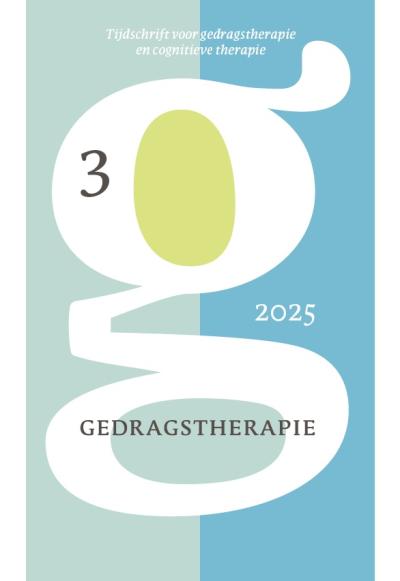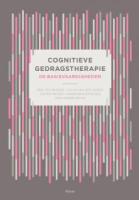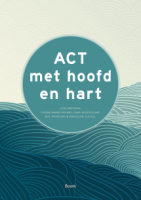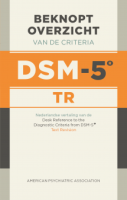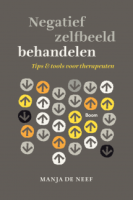Inhoud
Cognitieve gedragstherapie bij nachtmerries
Samenvatting
Nachtmerries zijn een veelvoorkomend probleem en kunnen de slaap en het functioneren overdag sterk negatief beïnvloeden. Ongeveer 2-5% van de algemene bevolking heeft één of meer nachtmerries per week. Binnen de geestelijke gezondheidzorg wordt weinig aandacht besteed aan nachtmerries. Dit artikel geeft een overzicht van de effectiviteit van verschillende technieken binnen de cognitieve gedragstherapie. De technieken die direct ingrijpen op de nachtmerries zoals exposure en Imagery Rehearsal Therapy leveren het beste resultaat. Hierbij lijkt desensitisatie van de nachtmerrieherinnering het effectieve element van de behandeling. Nachtmerries moeten niet per definitie gezien worden als secundair probleem, maar kunnen een op zichzelf staande klacht zijn die ook zo behandeld dient te worden.
Literatuur
- American Academy of Sleep Medicine (2005). International classification of sleep disorders: Diagnostic and coding manual. (2 ed.). Westchester, IL: American Academy of Sleep Medicine.
- American Psychiatric Association (2000). Diagnostic and Statistic Manual of Mental Disorders (4th ed.). Washington DC: American Psychiatric Press.
- Berquier, A., & Ashton, R. (1992). Characteristics of the frequent nightmare sufferer. Journal of Abnormal Psychology, 101, 246-250.
- Bixler, E., Kales, A., Soldatos, C., Kales, J. D., & Healey, S. (1979). Prevalence of sleep disorders in the Los Angeles metropolitan area. American Journal of Psychiatry, 79(10), 1257-1262.
- Blagrove, M., Farmer, L., & Williams, E. (2004). The relationship of nightmare frequency and nightmare distress to well-being. Journal of Sleep Research, 13, 129-136.
- Burgess, M., Gill, M., & Marks, I.M. (1998). Postal self exposure treatment of recurrent nightmares: A randomised controlled trial. British Journal of Psychiatry 172, 257-262.
- Burgess, M., Marks, I.M., & Gill, M. (2001). Self help for nightmares. Witney: The Oxford Stress & Trauma Centre.
- Celluci, A.J., & Lawrence, P.S. (1979). The efficacy of systematic desensitisation in reducing nightmares. Journal of Behavioural Therapy and Experimental Psychiatry, 9, 109 114.
- Chambless, D.L., Baker, M.J., Baucom, D.H., Beutler, L.E., Calhoun, K.S., Crits-Cristoph, P., et al. (1998). Update on empirically validated therapies, II. The Clinical Psychologist, 51, 3-16.
- Cook, J.M., Harb, G.C., Gehrman, P.R., Cary, M.S., Gamble, G.M., Forbes, D., et al. (2010). Imagery rehearsal for posttraumatic nightmares: A randomized controlled trial. Journal of Traumatic Stress, 23, 553-563.
- Davis, J.L., & Wright, D.C. (2007). Randomised clinical trial for treatment of chronic nightmares in trauma-exposed adults. Journal of Traumatic Stress, 20, 123-133.
- Forbes, D., Phelps, A., McHugh, A., Debenham, P., Hopwood, M., & Creamer, M. (2003). Imagery rehearsal in the treatment of posttraumatic nightmares in Australian veterans with chronic combat-related PTSD: 12-month follow-up data. Journal of Traumatic Stress, 16, 509-513.
- Friedman, M.J. (1997). Drug treatment for PTSD: Answers and questions. Annals of the New York Academy of Sciences, 82, 359-371.
- Kales, A., Soldatos, C., Caldwell, A. B., Charney, D. S., Kales, J. D., Markel, D., et al. (1980). Nightmares: Clinical characteristics and personality patterns. American Journal of Psychiatry, 137, 1197-1201.
- Kellner, R., Neidhardt, J., Krakow, B., & Pathak, D. (1992). Changes in chronic nightmares after one session of desensitization or rehearsal instructions. American Journal of Psychiatry, 149, 659-663.
- Köthe, M., & Pietrowsky, R. (2001). Behavioral effects of nightmares and their correlations to personality patterns. Dreaming, 11, 43-52.
- Krakow, B., Hollifield, M., Johnston, L., Koss, M., Schrader, R., Warner, T.D., et al. (2001a). Imagery Rehearsal Therapy for chronic nightmares in sexual assault survivors with posttraumatic stress disorder: A randomized controlled trial. Journal of the American Medical Association, 286, 537-545.
- Krakow, B., Hollifield, M., & Schrader, R. (2000). A controlled study of imagery rehearsal for chronic nightmares in sexual assault survivors with PTSD; a preliminary report. Journal of Traumatic Stress, 13, 589-609.
- Krakow, B., Kellner, R., Neidhardt, E.J., Pathak, D., & Lambert, L. (1993). Imagery rehearsal treatment of chronic nightmares: With a thirty month follow-up. Journal of Behaviour Therapy and Experimental Psychiatry, 24, 325-330.
- Krakow, B., Kellner, R., Pathak, D., & Lambert, L. (1995). Imagery rehearsal treatment for chronic nightmares. Behaviour Research and Therapy, 33, 837-843.
- Krakow, B., Kellner, R., Pathak, D., & Lambert, L. (1996). Long term reduction of nightmares with imagery rehearsal treatment. Behavioural and Cognitive Psychotherapy, 24, 135-148.
- Krakow, B., Melendrez, D.C., Pedersen, B., Johnston, L., Hollifield, M., Koss, M., et al. (2001b). Complex insomnia: Insomnia and sleep-disordered breathing in a consecutive series of crime victims with nightmares and PTSD. Biological Psychiatry, 49, 948953.
- Krakow, B., Sandoval, D., Schrader, R., Keuhne, B., Mcbride, L., Yau, C.L., et al. (2001c). Treatment of chronic nightmares in adjudicated adolescent girls in a residential facility. Journal of Adolescent Health, 29, 94-100.
- Krakow, B., & Zadra, A. (2006). Clinical management of chronic nightmares: Imagery Rehearsal Therapy. Behavioral Sleep Medicine, 4 45-70.
- Lancee, J., Spoormaker, V.I., Krakow, B., & Bout, J. van den (2008). A systematic review of cognitive-behavioral treatment for nightmares – toward a well-established treatment. Journal of Clinical Sleep Medicine, 4, 475-480.
- Lancee, J., Spoormaker, V.I., & Bout, J. van den (2010a). Cognitive-behavioral self-help treatment for nightmares: A randomized controlled trial. Psychotherapy and Psychosomatics, 79, 371-377.
- Lancee, J., Spoormaker, V.I., & Bout, J. van den (2010b). Nightmare frequency is associated with subjective sleep quality but not with psychopathology. Sleep and Biological Rhythms, 8, 187-193.
- Lancee, J., Spoormaker, V.I., & Bout, J. van den (in press). Long-term effectiveness of cognitive-behavioural self-help intervention for nightmares. Journal of Sleep Research.
- Lancee, J., Bout, J. van den, & Spoormaker, V.I. (2010c). Expanding self-help Imagery Rehearsal Therapy for nightmares with sleep hygiene and lucid dreaming: A waiting-list controlled trial. International Journal of Dream Research, 3, 111-120.
- Lavie, P. (2001). Sleep disturbances in the wake of traumatic events. North English Journal of Medicine, 345, 1825-1832.
- Levin, R., & Nielsen, T.A. (2007). Disturbed dreaming, posttraumatic stress disorder, and affect distress: A review and neurocognitive model. Psychological Bulletin, 133, 482-582.
- Long, M.E., Hammons, M.E., Davis, J.L., Frueh, B.C., Khan, M.M., Elhai, J.D., et al. (in press). Imagery rescripting and exposure group treatment of posttraumatic nightmares in veterans with PTSD. Anxiety Disorders.
- Miller, W.R., & DiPilato, M. (1983). Treatment of nightmares via relaxation and desentisation: A controlled evaluation. Journal of Consulting Clinical Psychology, 51, 870-877.
- Moore, B.A., & Krakow, B. (2007). Imagery rehearsal therapy for acute posttraumatic nightmares among combat soldiers in Iraq. American Journal of Psychiatry, 164, 683-684.
- Neidhardt, E.J., Krakow, B., Kellner, R., & Pathak, D. (1992). The beneficial effects of one treatment session and recording of nightmares on chronic nightmare sufferers. Sleep, 15, 470-473.
- Ohayon, M.M., Morselli, P.L., & Guilleminault, C. (1997). Prevalence of nightmares and their relationship to psychopathology and daytime functioning in insomnia subjects. Sleep, 20, 340-348.
- Palmqvist, B., Carlbring, P., & Andersson, G. (2007). Internet-delivered treatments with or without therapist input: Does the therapist factor have implications for efficacy and cost? Expert Review of Pharmacoeconomics & Outcomes Research 7, 291-297.
- Raskind, M., Peskind, E., Kanter, E., Petrie, E., Radant, A., Dobie, C.T.D., et al. (2003).
- Reduction of nightmares and other PTSD symptoms in combat veterans by prazosin: A placebo-controlled study. American Journal of Psychiatry, 160, 371-373.
- Raskind, M.A., Peskind, E.R., Hoff, D.J., Hart, K.L., Holmes, H.A., Warren, D., et al. (2007). A parallel group placebo controlled study of prazosin for trauma nightmares and sleep disturbance in combat veterans with posttraumatic stress disorder. Biological Psychiatry, 61, 928-934.
- Rhudy, J.L., Davis, J.L., Williams, A.E., McCabe, K.M., Bartley, E.J., Byrd, P.M., et al. (2010). Cognitive-behavioral treatment for chronic nightmares in trauma-exposed persons: Assessing physiological reactions to nightmare-related fear. Journal of Clinical Psychology, 66, 365-382.
- Ross, R. J., Ball, W. A., Sullivan, K. A., & Caroff, S. N. (1989). Sleep disturbance as the hallmark of posttraumatic stress disorder. American Journal of Psychiatry, 146, 697-707.
- Schredl, M. (2010). Nightmare frequency and nightmare topics in a representative German sample. European Archives of Psychiatry and Clinical Neuroscience, 260, 565-570.
- Schreuder, J., Kleijn, W., & Rooijmans, H. (2000). Nocturnal re-experiencing more than forty years after war trauma. Journal of Traumatic Stress, 13, 453-463.
- Spoormaker, V. I. (2008). A cognitive model of recurrent nightmares. International Journal of Dream Research, 1, 15-22.
- Spoormaker, V. I., & Montgomery, P. (2008). Disturbed sleep in post-traumatic stress disorder: Secondary symptom or core feature? Sleep Medicine Reviews, 12, 169-184.
- Spoormaker, V. I., Schredl, M., & Bout, J. van den (2006). Nightmares: From anxiety symptom to sleep disorder. Sleep Medicine Reviews, 10, 53-59.
- Spoormaker, V. I., & Bout, J. van den (2005). The prevalence of sleep disorders in the Netherlands. Sleep-Wake Research in the Netherlands, 16, 155-158.
- Spoormaker, V. I., & Bout, J. van den (2006). Lucid dreaming treatment for nightmares: A pilot-study. Psychotherapy and Psychosomatics, 75, 389-394.
- Spoormaker, V. I., Bout, J. van den & Meijer, E. J. G. (2003). Lucid dreaming treatment for nightmares: A series of cases. Dreaming, 13, 181-186.
- Swart, M.L., van Schagen, A.M., Lancee, J. & van den Bout, J. (niet gepubliceerde data). Prevalence of nightmares in a psychiatric pupulation.
- Taylor, F. B., Martin, P., Thompson, C., Williams, J., Mellman, T. A., Gross, C., et al. (2008). Prazosin effects on objective sleep measures and clinical symptoms in civilian trauma posttraumatic stress disorder: A placebo-controlled study. Biological Psychiatry, 63, 629-632.
- Van Liempt, S., Vermetten, E., Geuze, E., & Westenberg, H. G. M. (2006). Pharmacotherapy for disordered sleep in post-traumatic stress disorder: A systematic review. International Clinical Psychopharmacology, 21, 193-202.
- Verbeek, I., & Van de Laar, M. (2010). Behandeling van langdurige slapeloosheid. Houten: Bohn Stafleu van Loghum.
- Wittmann, L., Schredl, M., & Kramer, M. (2006). Dreaming in posttraumatic stress disorder: A critical review of phenomenology, psychophysiology and treatment. Psychotherapy and Psychosomatics, 76, 25-39.
- Zadra, A. L., & Donderi, D. O. (2000). Nightmares and bad dreams: Their prevalence and relationship to well-being. Journal of Abnormal Psychology, 109, 273-281.
- Zadra, A. L., & Pihl, R. O. (1997). Lucid dreaming as a treatment for recurrent nightmares. Psychotherapy and Psychosomatics, 66, 50-55.
- Zadra, A. L., Pilon, M., & Donderi, D. C. (2006). Variety and intensity of emotions in nightmares and bad dreams. The Journal of Nervous and Mental Disease, 194, 249-254.
 © 2009-2025 Uitgeverij Boom Amsterdam
© 2009-2025 Uitgeverij Boom Amsterdam
De artikelen uit de (online)tijdschriften van Uitgeverij Boom zijn auteursrechtelijk beschermd. U kunt er natuurlijk uit citeren (voorzien van een bronvermelding) maar voor reproductie in welke vorm dan ook moet toestemming aan de uitgever worden gevraagd:
Behoudens de in of krachtens de Auteurswet van 1912 gestelde uitzonderingen mag niets uit deze uitgave worden verveelvoudigd, opgeslagen in een geautomatiseerd gegevensbestand, of openbaar gemaakt, in enige vorm of op enige wijze, hetzij elektronisch, mechanisch door fotokopieën, opnamen of enig andere manier, zonder voorafgaande schriftelijke toestemming van de uitgever.
Voor zover het maken van kopieën uit deze uitgave is toegestaan op grond van artikelen 16h t/m 16m Auteurswet 1912 jo. Besluit van 27 november 2002, Stb 575, dient men de daarvoor wettelijk verschuldigde vergoeding te voldoen aan de Stichting Reprorecht te Hoofddorp (postbus 3060, 2130 KB, www.reprorecht.nl) of contact op te nemen met de uitgever voor het treffen van een rechtstreekse regeling in de zin van art. 16l, vijfde lid, Auteurswet 1912.
Voor het overnemen van gedeelte(n) uit deze uitgave in bloemlezingen, readers en andere compilatiewerken (artikel 16, Auteurswet 1912) kan men zich wenden tot de Stichting PRO (Stichting Publicatie- en Reproductierechten, postbus 3060, 2130 KB Hoofddorp, www.cedar.nl/pro).
No part of this book may be reproduced in any way whatsoever without the written permission of the publisher.
Inloggen VGCt en VVGT
Leden van de VGCt en de VVGT loggen in via de site van hun vereniging. Als u op die site bent ingelogd als lid, vindt u daar een button naar het Tijdschrift voor Gedragstherapie.
English
Behavioral Therapy: Journal for Behavioral Therapy and Cognitive Therapy ISSN 0167-7454
Information in English can be found here.



